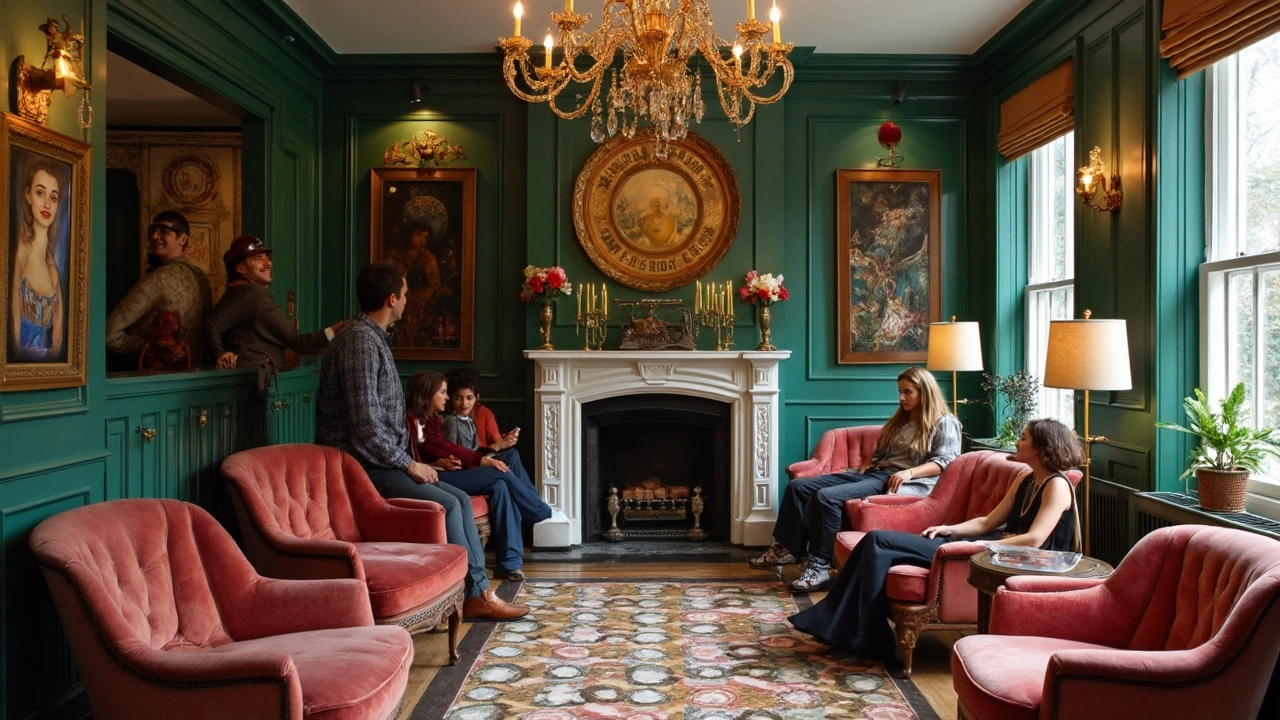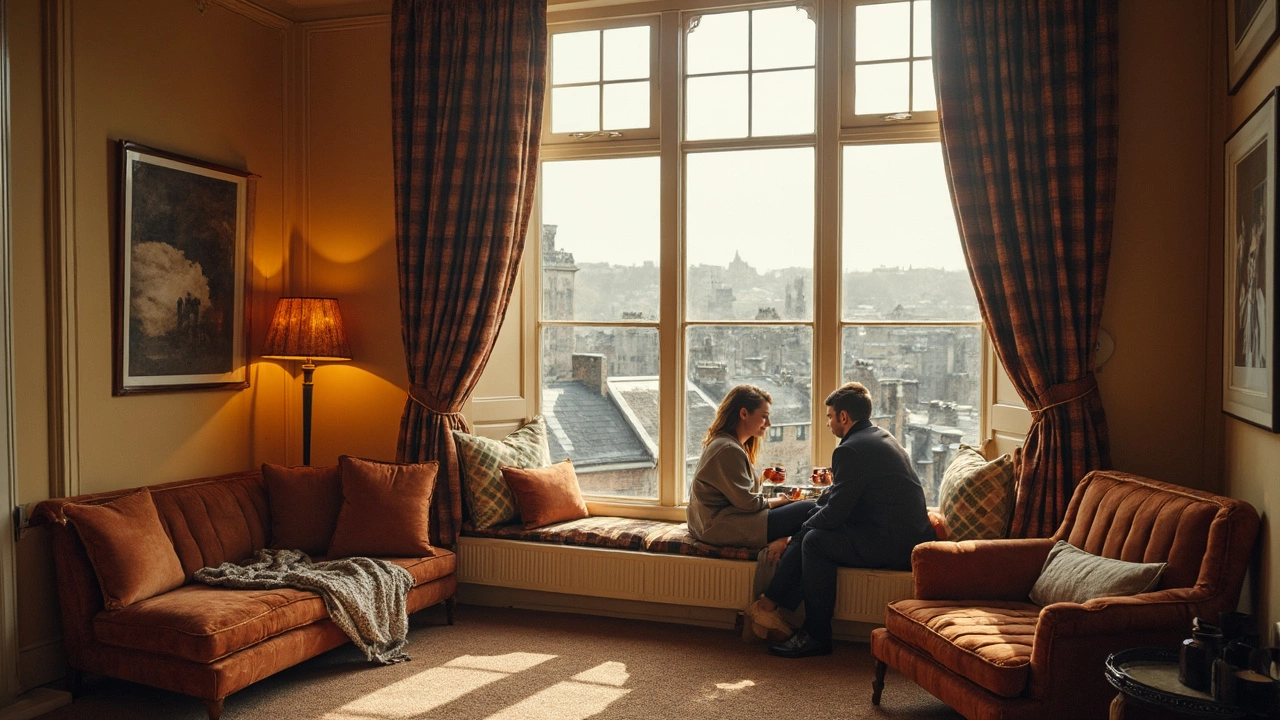What is an Example of a Boutique Hotel? Exploring Unique Stays
 Jun, 20 2025
Jun, 20 2025
The term "boutique hotel" gets tossed around a lot, but not every cool or cute hotel fits the bill. Picture this: you walk into a small hotel where the lobby feels more like a cozy living room than a check-in desk. There’s probably some local artwork on the walls, staff who call you by your name, and maybe even a playlist that matches the city you’re in. That’s the vibe you're after.
So, what actually counts as a boutique hotel? The main things are size, style, and personality. Most boutique hotels have fewer than 100 rooms, no copy-paste decor, and a strong sense of place. They’re designed to make you feel like a guest, not a number. The spot you choose should give you a taste of the city—maybe it’s an old building with a story, or maybe every room is decorated by a local artist.
- What Makes a Boutique Hotel?
- Standout Example: The Hoxton, Amsterdam
- Why Choose a Boutique Hotel?
- Tips for Booking Your Perfect Stay
What Makes a Boutique Hotel?
If you’re still wondering what gives a boutique hotel its edge, it comes down to a few things: size, design, service, and that local personality you can’t fake. Most boutique hotels are relatively small—think anywhere from 10 to 100 rooms. They’re all about individuality, not cranking out cookie-cutter experiences like many big chains do.
Design is a huge deal. These hotels usually break away from the boring beige you see everywhere. Instead, you'll spot bold colors, cool furniture, maybe even a bit of quirkiness. The idea is to make guests feel like they’re somewhere special, not just another generic overnight stop.
Service? It’s personal but not stiff. Staff often know your name, offer tips about local spots, and sometimes surprise guests with extra touches—like a handwritten note, free bikes, or snacks from a neighborhood bakery. There’s also a big focus on local flair. You can expect regional artwork, local coffee, and maybe even city maps sketched by area artists.
- Room Counts: Usually under 100 rooms for that intimate feel.
- Thoughtful Design: Style isn’t an afterthought—expect creative, often Instagram-worthy spaces.
- Prime Locations: Often right in the heart of vibrant neighborhoods, not hidden by airports or highways.
- Personalized Service: Staff get to know you, not just your room number.
- Local Flavor: From your breakfast eggs to your bedsheets, the boutique approach means everything has a story.
| Feature | Boutique Hotel | Standard Chain Hotel |
|---|---|---|
| Average Number of Rooms | 35 | 150+ |
| Design Style | Unique & Locally Inspired | Standardized |
| Location | Historic or Trendy Areas | Business Districts or Near Airports |
| Service Approach | Personalized | Impersonal/Automated |
| Typical Price Range | $120–$400/night | $80–$250/night |
Here’s the thing: the boutique hotel isn’t about gimmicks or just looking cool. It’s about creating a memorable stay—something that feels just right for you and the city you’re visiting. If you want a place that feels a little more special, and a little less like everyone else’s trip, this is where you’ll find it.
Standout Example: The Hoxton, Amsterdam
If you want to see what a real boutique hotel looks like, The Hoxton in Amsterdam nails it. This hotel sits right on Herengracht, one of the city’s famous canals, and it’s built out of five historic canal houses that once belonged to Amsterdam’s mayor in the 17th century. You get that classic Dutch vibe, but with way more comfort than any old townhouse could dream up.
The Hoxton only has 111 rooms, which checks the "small size" box. The layout keeps things personal, with each room designed a little differently—some have exposed brick, others look out over the water, and all of them are modern without feeling cold or bland. You might even spot vintage rotary phones or old-school radios in the rooms, which shows their knack for mixing retro with fresh style.
The public spaces really set it apart. The lobby doubles as a hangout spot for both guests and locals, with cozy couches, a buzzing bar, and an all-day restaurant called Lotti's. Here, you’re just as likely to meet a digital nomad as a local sipping coffee. And for folks who get their best ideas late at night, The Hoxton has free WiFi everywhere and even offers creative meeting rooms—ideal if you’re someone who mixes work and play.
They do some cool things with food too. The breakfast bags—a staple at Hoxton hotels—include fresh fruit, granola, and orange juice, dropped off at your door every morning, free of charge. It’s a small thing, but it feels personal, and that’s what a boutique hotel should be about.
- Location: Herengracht 255, 1016 BJ Amsterdam, Netherlands
- Number of Rooms: 111
- Room Features: Rainfall showers, quirky decor, canal or courtyard views
- Amenities: Free bikes, lobby workspace, flexible check-in/out times
- Nearby: Nine Streets shopping district, Anne Frank House, local markets
For numbers fans, here’s a peek at why The Hoxton stands out:
| Feature | Details |
|---|---|
| Year Opened | 2015 |
| Guest Rating (June 2025) | 4.7/5 |
| Distance to Central Station | 1.3 km |
| Average Nightly Rate | €220 |
If you want to feel like you're part of the city and not just visiting, this spot gets it right. The Hoxton isn’t just a place to crash—it’s a place to feel plugged in.

Why Choose a Boutique Hotel?
If you’re tired of boring, generic hotel rooms where you forget what city you’re in, a boutique hotel will shake things up for you. These spots focus totally on offering a personalized experience, with real character and thoughtful touches. According to a 2024 Statista report, travelers listed unique design, stronger connection with local culture, and more attentive service as their top reasons for picking boutique properties over big chains.
The difference boils down to how you feel as a guest. Where chains use the same blueprint everywhere, boutique hotels thrive on individuality. They’re often renovated old buildings or creative new spaces that embrace the neighborhood’s vibe. Think exposed brick, quirky furniture, indie art—little details that make your stay stick in your memory way longer than a plain hotel room would.
Service is another huge plus. Staff at boutique hotels usually go out of their way to remember your preferences and help with local recommendations. Don’t be surprised if they suggest a secret brunch spot or help book hard-to-get tickets—stuff you won’t get from a 300-room mega hotel.
Now, there’s also a practical side: boutique hotels often pack lots of value with amenities you actually want, like free Wi-Fi, complimentary snacks, housed pets, or late checkout. Here’s a quick look:
| Feature | Boutique Hotel | Chain Hotel |
|---|---|---|
| Room Count | Under 100 | 100+ |
| Personalized Service | Nearly always | Sometimes |
| Local Flavor | Strong focus | Minimal |
| Unique Design | Yes | Usually not |
So if you’re after a boutique hotel experience for your next trip, you’ll get more than just a bed. You’ll actually remember your stay, and maybe even want to come back—not just because you liked the city, but because the hotel itself left an impression.
- Look for hotels rated highly on service—TripAdvisor is a good source for real guests’ stories.
- If you love art and design, choose places that collaborate with local artists.
- Ask about complimentary perks when booking—boutique hotels often throw in extras.
Tips for Booking Your Perfect Stay
Ready to book a boutique hotel but feel a bit lost in the options? Nailing the right choice is easier when you know what matters most. Boutique spots aren't all alike, and a few quick tricks will help you dodge letdowns and score those little extras that make travel memorable.
First, always check reviews—not just star ratings, but real guest comments. Look for mentions of service, vibe, and unique features. Websites like TripAdvisor and Google give you the lowdown straight from travelers who've been there, done that. It's smart to peek at recent reviews (within the last three months) since management and staff can change.
If location matters to you—and let’s be honest, it usually does—scope out the hotel on a map. Some boutique hotels sit tucked away in artsy neighborhoods, while others are right in the middle of everything. Most travelers want to be close to restaurants, shops, and sights. Cut down your transport costs by choosing a hotel within walking distance of your favorite spots.
Don't get surprised by add-ons. Boutique hotels sometimes charge for things you'd assume are free, like breakfast or bike rentals. Eye the fine print before you get too excited about a low nightly rate. Booking directly on the hotel's own site often gets you better perks, like free drinks or late check-out.
- Check cancellation policies. Many boutique hotels have stricter terms than big chains.
- Look at the room layout and amenities in detail—some offer cool extras like in-room espresso machines or record players.
- If you have special requests (like a super quiet room or early check-in), contact the hotel personally. Smaller hotels usually go the extra mile.
- Traveling with kids or pets? Don't assume they're allowed. Some boutique hotels are adults-only or have pet restrictions.
Want numbers? According to a 2024 Statista report, 72% of boutique hotel guests picked their property based on design and local flavor. About 60% said personalized service was the highlight. That says a lot about what travelers love in these hotels.
| Feature | % of Guests Prioritizing |
|---|---|
| Design/Atmosphere | 72% |
| Personalized Service | 60% |
| Unique Location | 45% |
One last tip if you want the true boutique hotel experience: book directly, call ahead, and mention any special occasions. Many places will surprise you with upgrades or treats just because you asked. That’s the kind of personal touch big hotels rarely deliver.